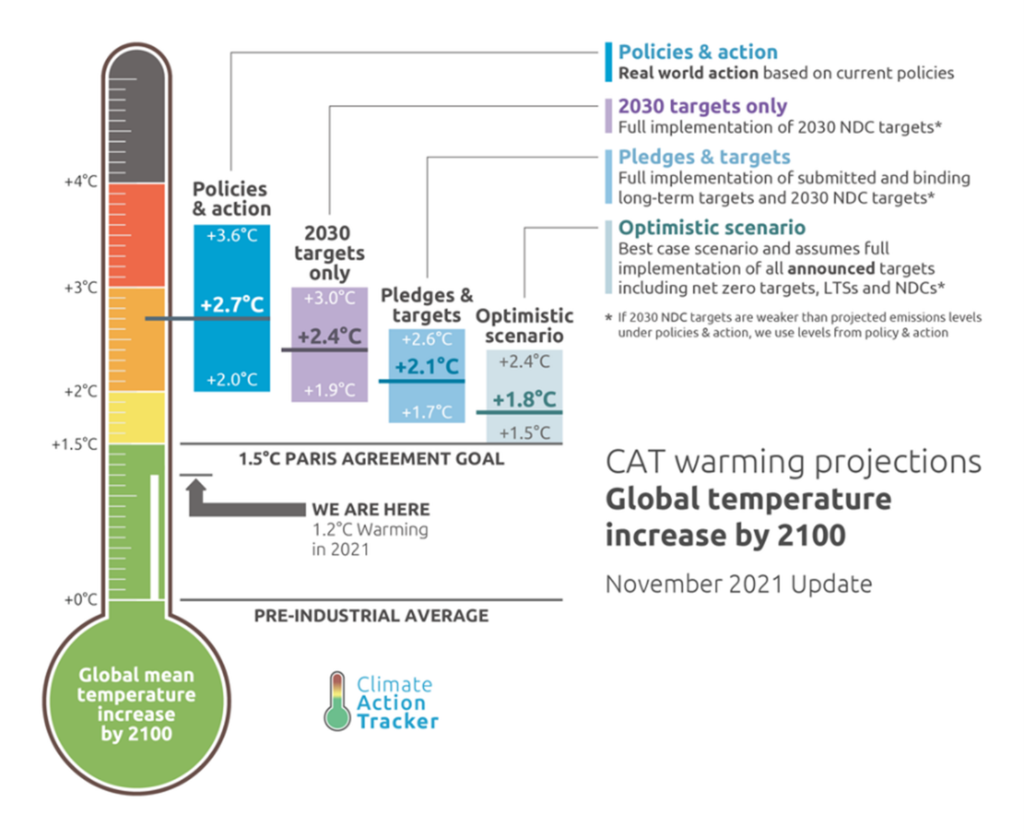
Coal in the stocking at COP26: common goal has been agreed on, doubts around its feasibility remain
5 min.
In early November of 2021, the United Nations Climate Change Conference of the Parties (COP26) took place in Glasgow. Almost 200 national delegations sat around the table to negotiate new goals, with central aims to mitigate and adapt to the ongoing climate crisis.
“The 1.5°C benchmark” has recently turned into the rallying cry for the fight against the climate crisis. It refers to the goal that the 2016 Paris agreement set in limiting global temperature warming compared to pre-industrial levels. The 2016 pact – the most ambitious treaty of its type until then– aimed at “keeping the temperature raise well below 2°C, and preferably limit the increase to 1.5 °C.” However, since then, a scientific consensus has been formed that asserts that the 2°C mark is not only unambitious but greatly insufficient.
In Glasgow this year, the global leaders agreed to leave behind the 2°C goal and aim jointly at the more ambitious number among the above-cited: 1.5°C. Countries have thus committed to (before the end of 2022) taking the appropriate measures and putting themselves on the right track towards the 1.5°C goal.
While this commitment has been accepted positively by some, the adequacy of this goal is nonetheless arguable, and judged by many others, including the COP26 President Alok Sharma as “weak.” For context, in 2021 we have already reached a 1.2°C temperature increase. At the current emissions rate, IPCC estimated that the 1.5°C temperature increase would be reached no later than the early 2030s and according to Climate Action Tracker, by the end of the century, we will reach a warming of 2.4°C.

While the reduction of the foreseen temperatures and thus of greenhouse gases (GHGs) is a complex topic, it is one that, at least for COP26 and for those left with a bitter taste from it, can be greatly boiled down to coal. High hopes were raised and justified as the world watched major coal-users such as Poland, Vietnam and Chile declare themselves ready to phase out its use, leading the way to a first global agreement on coal reduction. Nonetheless, after opposition on behalf of India and China resulted in a last-minute amendment, the final text of the COP26 declaration greatly reframed this ambition to a “simple” phasing-down of coal use, making it even less realistic to reach the 1.5°C goal.
While the Glasgow agreement may be deemed by many as disappointing regarding coal commitments, it is important to put this into context: other major contributors to GHG, namely oil and natural gas, are not even addressed by the agreement. To add to this already abundant complexity, much more can be said on the monitoring and reporting mechanisms of country commitments and ultimately (the lack of) sanctions when they fall behind.
The two intense weeks of COP26 were a textbook example of how international negotiations work, albeit in the rare circumstances in which events are unravelling under the highlights of extensive media coverage. The coal problem, presenting the apple of discord during the conference is only an example of how when it comes down to climate policy, there are various and often opposing interests at play. The quantity and complexity of these interests do not do any favours in the search for compromise, most notably in conflicts between developing countries on the way to industrialise their future and the most climate-vulnerable nations, which may not even have a future. While these differences are certainly not easy to overcome, it could be important to keep in mind that, at the end of the day, we are all in the same boat. And the sea is rising.